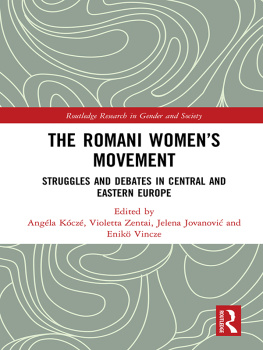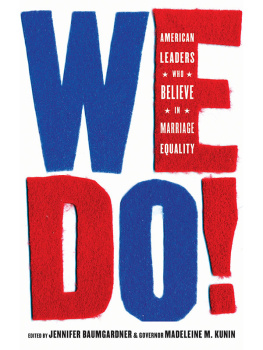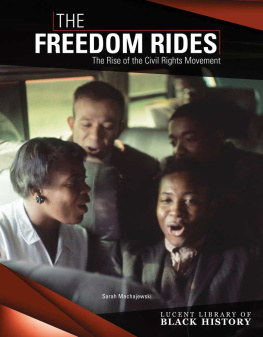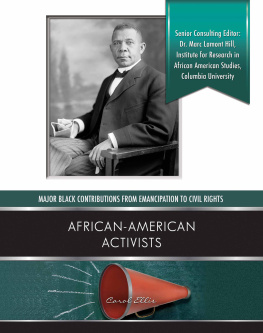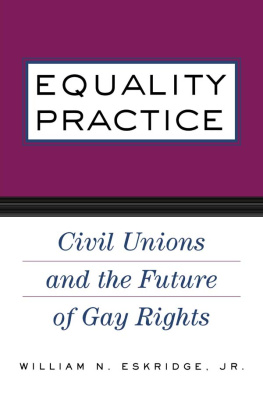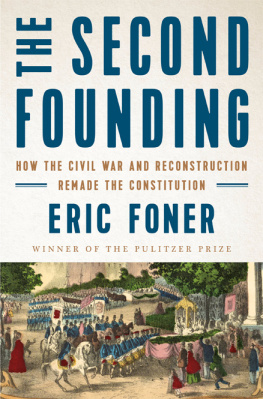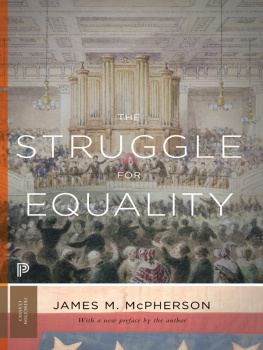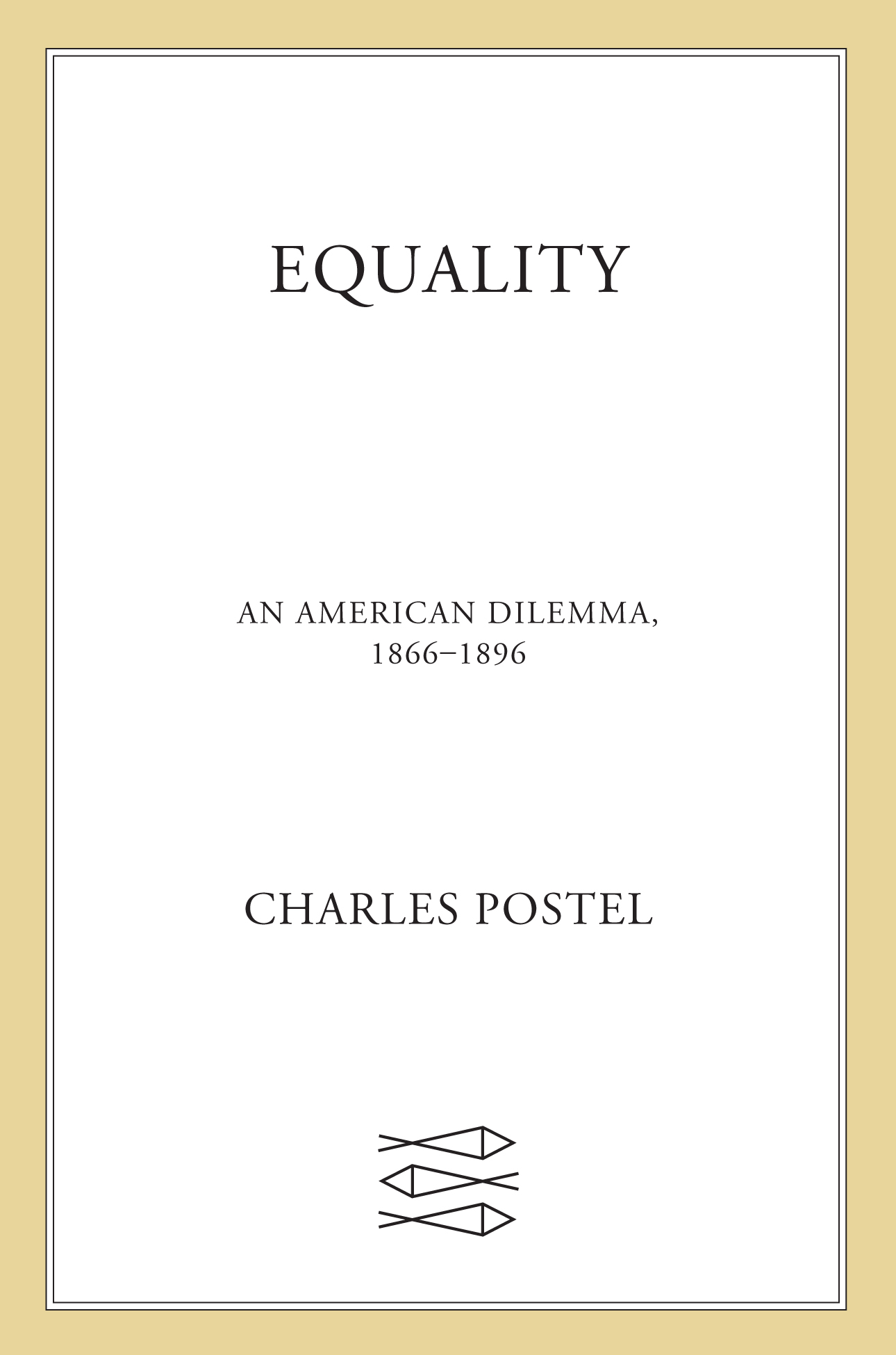The author and publisher have provided this e-book to you for your personal use only. You may not make this e-book publicly available in any way. Copyright infringement is against the law. If you believe the copy of this e-book you are reading infringes on the authors copyright, please notify the publisher at: us.macmillanusa.com/piracy.
T HE CIVIL WAR, fought over racial slavery, unleashed a torrent of claims to equal rights. Former slaves and womens rights activists, miners and domestic servants, farmers and factory hands, pressed their demands. This contest resulted in extraordinary experiments in collective action as, in their pursuit of equality, millions of men and women joined leagues, unions, Granges, assemblies, and lodges. Taking stock of these experiments forces us to rethink some of what passes for conventional wisdom about the United States and its history.
In the conventional telling, as the French and other continentals raised the banners of Liberty, Equality, and Fraternity, Americans embraced the first at the expense of the other two. They spurned egalitarian and collective ideals, we have been told, because of their exceptional commitment to individual liberty. But the decades that followed the Civil War place this wisdom in a different light. The great social movements of the time reflected an understanding that without equality there could be no freedom, and without solidarity there could be no equality.
Equality and solidarity, however, were fractured and contradictory. Too often, divergent notions of equality clashed with one another; too often, fraternity and solidarity rested on division and exclusion. These dynamics get to the heart of an inescapable dilemma: mighty farmer, labor, and womens rights movements undertaken in the name of equality were accompanied by the destruction of political, economic, and civil rights for African Americans and other racial minorities. Decades that brought forth herculean efforts to overcome the economic inequality of corporate capitalism and the sexual inequality of the late Victorian social order also witnessed the extreme inequities of Indian dispossession, Chinese exclusion, Jim Crow, disenfranchisement, and lynch law.
This book is an exploration of equality and its contested meanings in the wake of the Civil War. It focuses on developments from the late 1860s to the 1890sthat is to say, from Reconstruction through what is known as the Gilded Age. The point of departure for this exploration involves the killing fields at Gettysburg. The design for a soldiers national cemetery at that fateful battlefield has provided the thematic lines of inquiry that this book explores.
THE CIVIL WARS MOST DEADLY BATTLE, fought over the first three days of July 1863, left some eight thousand bodies decaying in the fields outside the small Pennsylvania village of Gettysburg. Teams of Union soldiers, Confederate prisoners, and local residents had buried some of the fallen in shallow graves. The layer of soil was spread too thin for protection from predators and could not disguise the shape or smell of decomposing corpses. The rotting dead at Gettysburg demanded attention. They posed a health risk to the local citizens, who already had enough grievances about the war. The political requirement of showing respect to the dead necessitated swift action to identify the bodies and make arrangements for their proper interment. As land sharks circled hoping to cash in on high prices for a future burial ground, an interstate commission formed to finance and direct the reburial in a suitable cemetery. Six weeks after the battle, the commission hired William Saunders, a landscape architect and an administrator in the Department of Agriculture, to draw the cemeterys layout.
Saunders had to work quickly. The hot weather sped decomposition, making it ever more difficult to recover and identify the bodies. The desire of farmers to get back into their fields posed an even greater threat. Everything was hurried to get at work and remove the bodies, Saunders noted, as the local farmers, anxious to plow for crops and seemingly careless about the dead, tilled over the shallow graves, putting the corpses in danger of obliteration.
On November 17, Abraham Lincoln called Saunders to the White House to discuss the architects plans for the Soldiers National Cemetery at Gettysburg. The president took much interest in it and was much pleased with the method of the graves. He also noted that the design differed from the ordinary cemetery. Lincoln said it was an admirable and befitting arrangement and signed off on the plans, at least according to Saunderss record of the meeting in his journal.
The design answered three major problems of how to inter the Gettysburg dead. The first problem was how to bury so many with equal respect to each. The Civil War was one of the first industrial wars. It applied the technologies and organizational methods of the railroad, the telegraph, and mass production to the slaughter of human beings. The killing at Gettysburg was the crowning achievement of these new methods. In such a war, massed troops facing sheets of artillery and rifle fire blurred the hierarchical distinctions of military command. The new ways of war had left thousands of indiscernible corpses of officers and soldiers rotting on the field, rendering old categories meaningless.
Military cemeteries traditionally reinforced in death distinctions in life; commanding tombstones for commanding officers towered over humble markers for humble soldiers. By contrast, Saunders wanted a plan that would take account of the equality of condition of the dead and allow of no distinction. He wanted to secure regularity and to ensure that the headstones are precisely alike. He devised a starkly rationalist system forming a continuous line of granite blocks, each exactly nine inches high with a ten-inch face. The inscriptions on every marker were to record the identical information: name, company, and regiment. In later years, first Saunders and then other administrators obliged the demands from various constituencies for special monuments and markers at the cemetery. But the power of the original design lay in what Saunders described as uniformity and simplicity. Just as the new means of warfare made no distinctions in mass death, Saunders designed an egalitarian system of mass burial.
The second problem was how to avoid any unjust discrimination between the states. The cemetery was to hold Union corpses (with the Confederate dead left to separate mass graves). But among the Union dead, Saunders thought it was essential that the soldiers of each state be given equal treatment. This posed a challenge given that more bodies came from some states than from others and given the sloping and uneven terrain of the grounds. His solution was to divide the state lots into pie-shaped slices arranged in a semicircle, with each state sharing an equal proportion of high and low ground. With this formation, the position of each lot would be relatively of equal importance, and thereby Saunders paid tribute to another type of equality regarding the relationships between states.
The third problem was how to bind the lots into a single whole so that each state would be part of a common center. Saunderss solution was to place at the top, rising above the rest, an imposing national monument. Equality demanded that each state receive its proper due, but that did not imply a loose or decentralized confederation. Saunders believed quite the opposite. He placed a national monumentat the central point on the highest reach of the groundto honor the birth of new centralized national power rising from the ashes of war. The cemetery must ever be a national institution, observed a newspaper reporter who reviewed Saunderss scheme, noting that all the sections tend towards a common monument and bear the same relation to it. At the same time, no State will be permitted to embellish its own lot, but what is done for one will be done for all.


